Abstract
Newborn Holstein-Friesian calves were cold stressed by immersion in water at 15 to 17 degrees C until the core body temperature was lowered by 10 degrees C. Non-cold stressed calves were immersed in water at thermoneutral temperature (35 to 37 degrees C). The time required to lower the core body temperature of the cold stressed calves by 10 degrees C was 172 +/- 87 minutes (mean +/- SD). The time required for the core body temperature of the cold stressed calves to return to normal after immersion was 400 +/- 140 minutes (mean +/- SD). Differences were observed between cold and noncold stressed calves in the shivering response during immersion and the clinical condition after immersion. Cold-induced pathological lesions were confined to tissues located peripherally, particularly in the hind legs. Significant differences were observed between cold and noncold stressed calves in the incidence of subcutaneous edema in the ventral sternum (P less than or equal to 0.025), subcutaneous hemorrhage in the hind legs (P less than or equal to 0.025), synovitis (P less than or equal to 0.025) and hemorrhage (P less than or equal to 0.05) of the synovial membranes of the hock joints and hemorrhage (P less than or equal to 0.05) into the hock joint cavities.
Full text
PDF
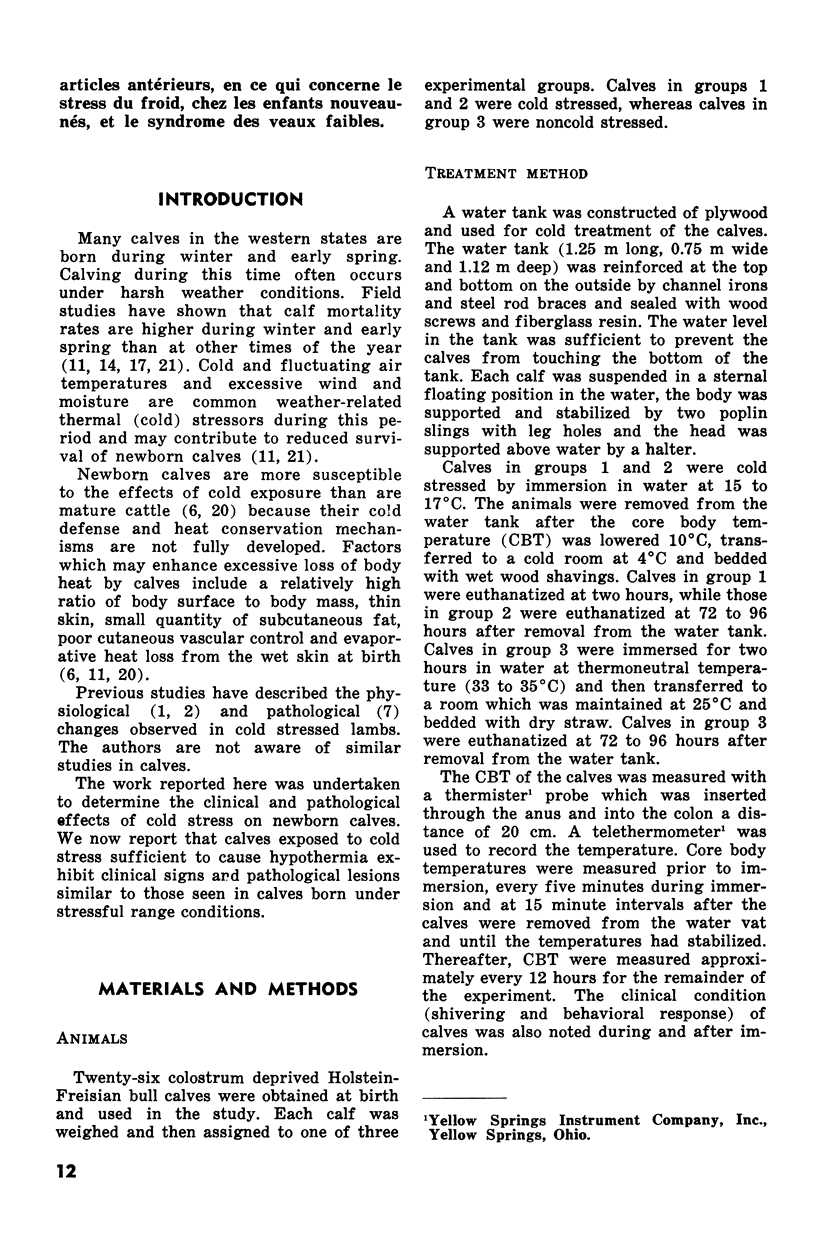
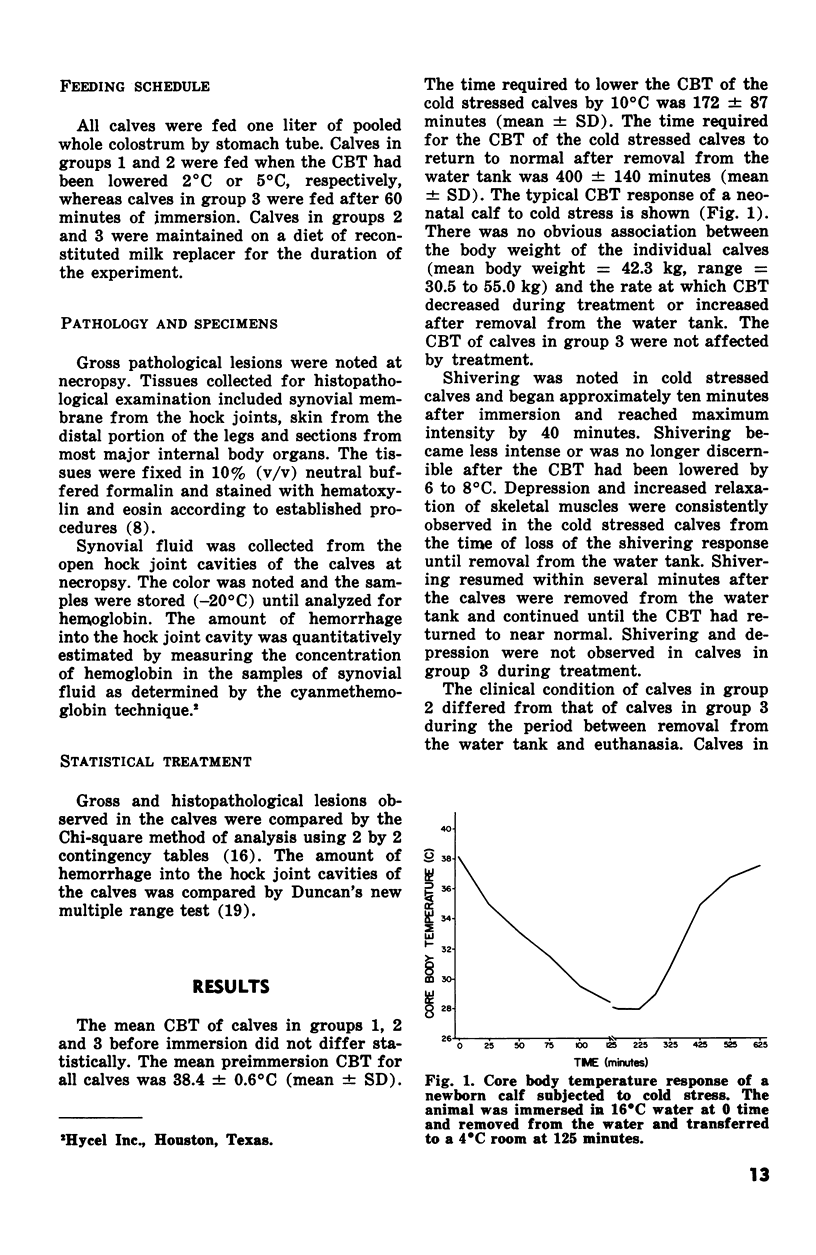

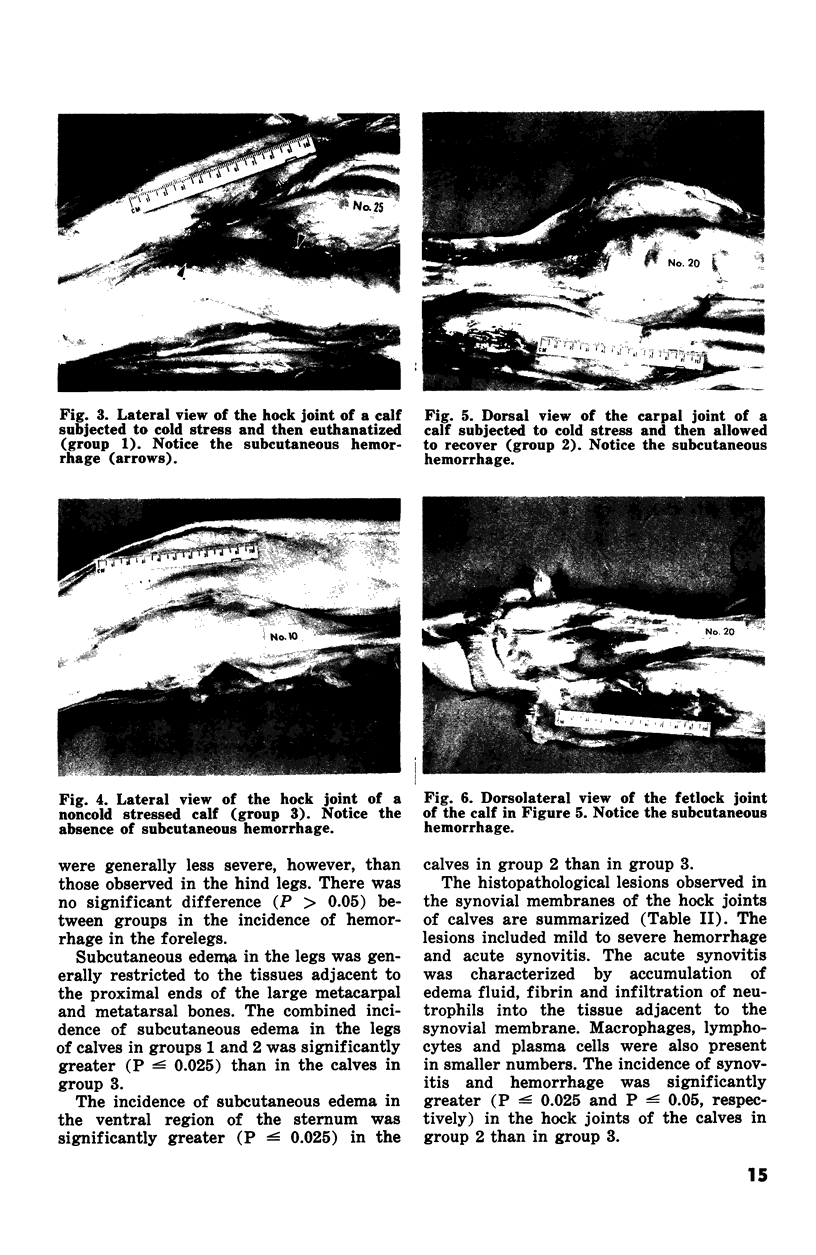
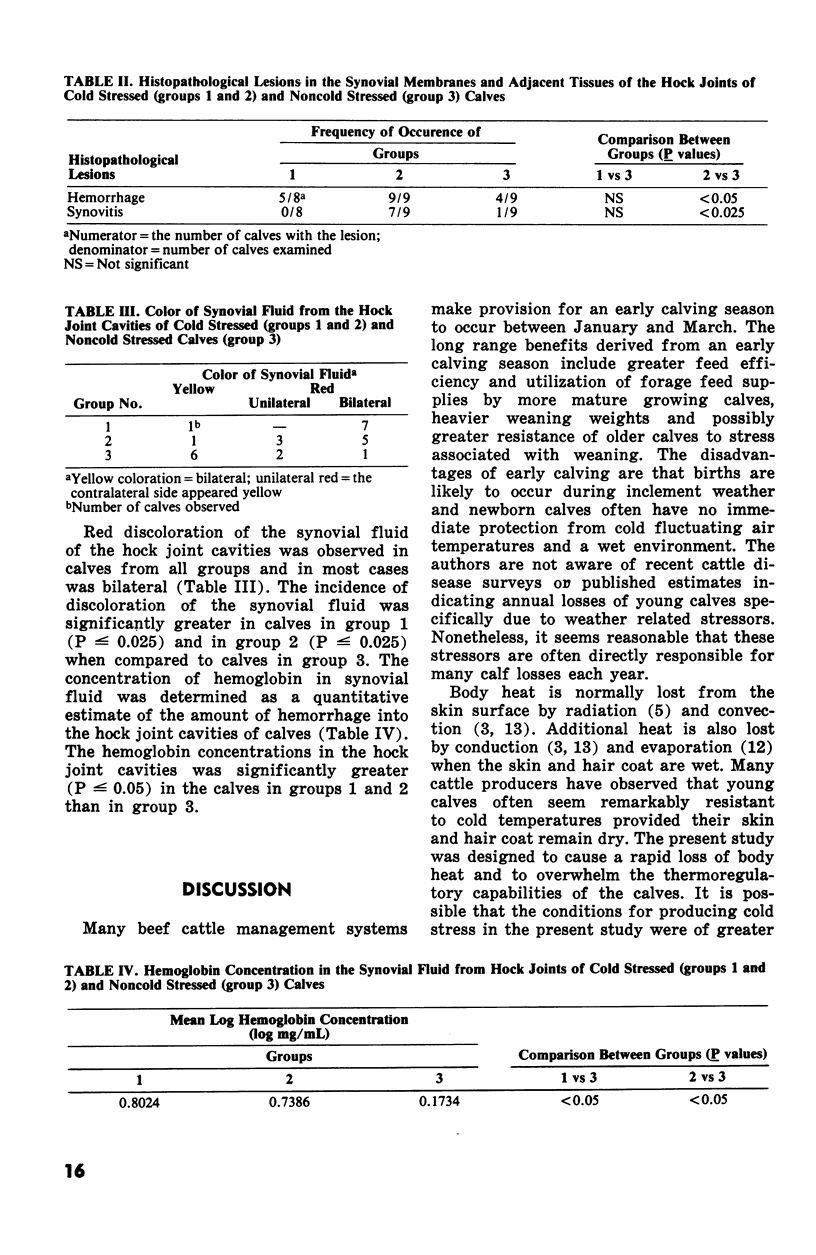

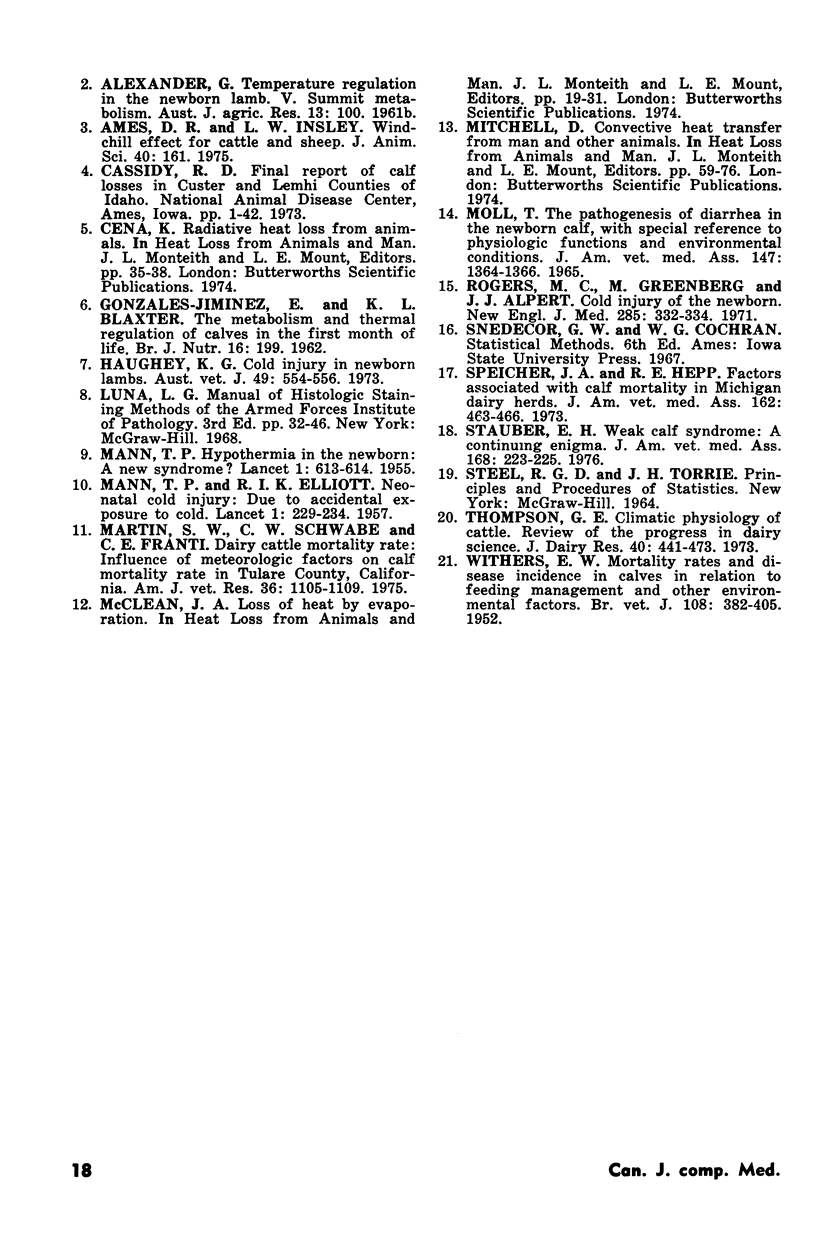
Images in this article
Selected References
These references are in PubMed. This may not be the complete list of references from this article.
- Ames D. R., Insley L. W. Wind-Chill effect for cattle and sheep. J Anim Sci. 1975 Jan;40(1):161–165. doi: 10.2527/jas1975.401161x. [DOI] [PubMed] [Google Scholar]
- ELLIOTT R. I., MANN T. P. Neonatal cold injury due to accidental exposure to cold. Lancet. 1957 Feb 2;272(6962):229–234. [PubMed] [Google Scholar]
- GONZALEZ-JIMENEZ E., BLAXTER K. L. The metabolism and thermal regulation of calves in the first month of life. Br J Nutr. 1962;16:199–212. doi: 10.1079/bjn19620021. [DOI] [PubMed] [Google Scholar]
- Haughey K. G. Cold injury in newborn lambs. Aust Vet J. 1973 Dec;49(12):554–563. doi: 10.1111/j.1751-0813.1973.tb06732.x. [DOI] [PubMed] [Google Scholar]
- Martin S. W., Schwabe C. W., Franti C. E. Dairy calf mortality rate: influence of meteorologic factors on calf mortality rate in Tulare County, California. Am J Vet Res. 1975 Aug;36(08):1105–1109. [PubMed] [Google Scholar]
- Moll T. The pathogenesis of diarrhea in the newborn calf, with special reference to physiologic functions and environmental conditions. J Am Vet Med Assoc. 1965 Dec 15;147(12):1364–1366. [PubMed] [Google Scholar]
- Rogers M. C., Greenberg M., Alpert J. J. Cold injury of the newborn. N Engl J Med. 1971 Aug 5;285(6):332–334. doi: 10.1056/NEJM197108052850607. [DOI] [PubMed] [Google Scholar]
- Speicher J. A., Hepp R. E. Factors associated with calf mortality in Michigan dairy herds. J Am Vet Med Assoc. 1973 Mar 15;162(6):463–466. [PubMed] [Google Scholar]
- Stauber E. H. Weak calf syndrome: a continuing enigma. J Am Vet Med Assoc. 1976 Feb 1;168(3):223–225. [PubMed] [Google Scholar]







